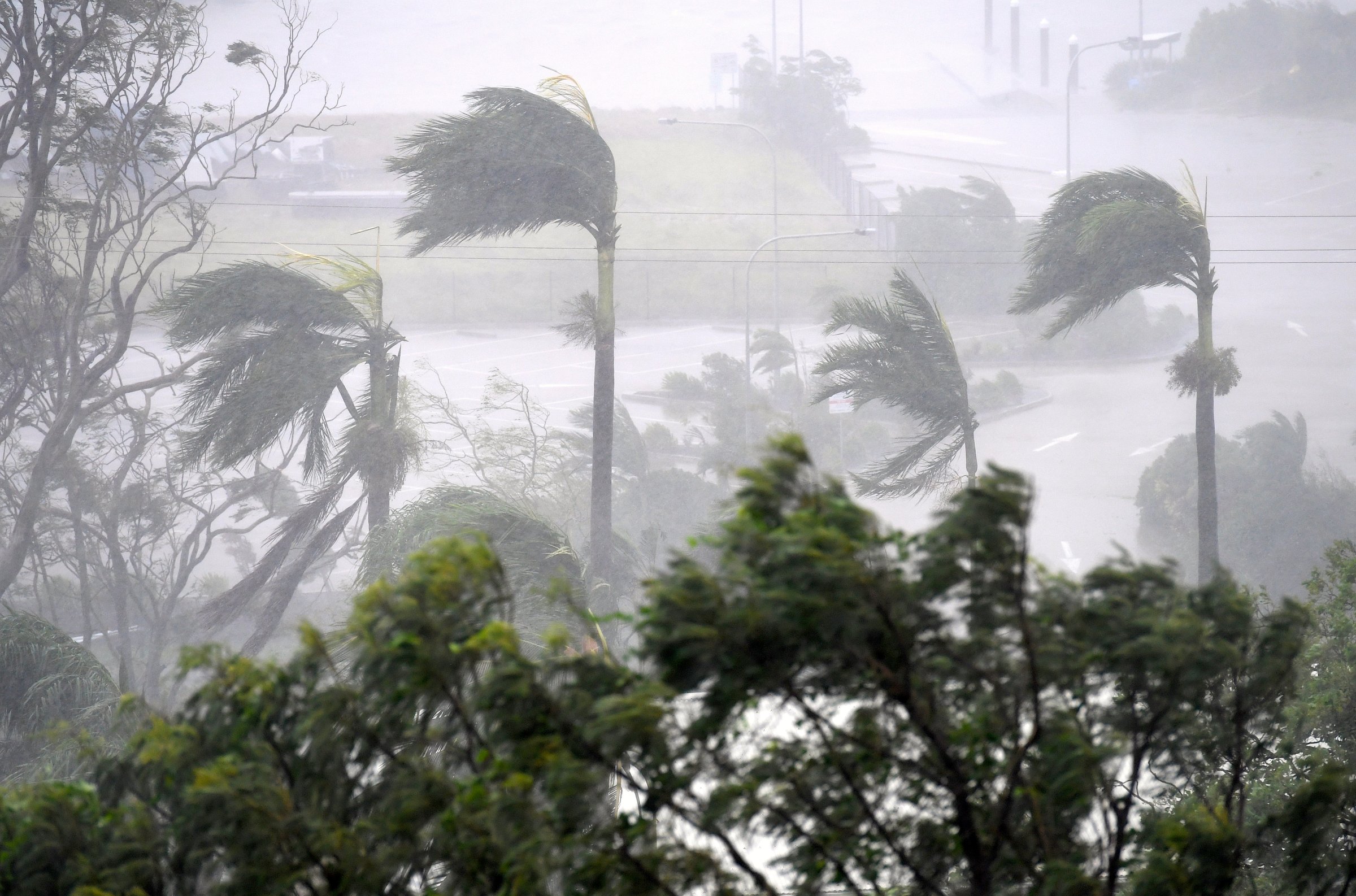
After battering the Whitsunday Islands, powerful Cyclone Debbie made landfall in Australia’s northern Queensland Tuesday, bringing gusts stronger than 260km per hour, storm surges, torrential rain and flooding as it moved slowly southwest.
More than 45,000 homes in the area around the coastal city of Bowen have lost power, according to government owned energy provider Ergon Energy, and residents were being warned to stay indoors and “bunker down.”
Soon after Cyclone Debbie made landfall, Queensland Premier Annastacia Palszczuk addressed residents: “This is a dangerous cyclone,” she said, according to the Guardian. “People must stay indoors. Please do not go outside, and please contact the emergency services for assistance. When they can help you over the phone, they will.”
Queensland’s police commissioner said one man had been hospitalized after being “hurt badly” by a collapsing wall in Prosperpine, a small rural town south of Bowen where the cyclone made landfall. There were other reports of some damage to buildings.
“We’re getting reports of roofs starting to lift, even in some of our own facilities in the Whitsundays,” said Queensland Police Deputy Commissioner Steve Gollschewski, according to the BBC.
At about 3 p.m. local time, the Bureau of Meteorology downgraded Cyclone Debbie to a Category 3 storm as it continued southwest out of Bowen. It said that the system was expected to carve a more southerly track over inland Queensland with the fiercest winds near its center weakening rapidly.
The day before, Australia’s Prime Minister Malcolm Turnbull had called in the country’s defense force to assist in emergency response and 25,000 people living in north Queensland had been told to evacuate in preparation for what could be the worst storm to hit the coast since Cyclone Yasi in 2011, the Guardian reports.
Cyclone Debbie threatened to trigger tidal surges that could inundate the low-lying coastal areas. The Bureau of Meteorology told ABC local radio that major and moderate flood warnings were in place for three rivers — the Pioneer, the Don and Proserpine.
“We do believe there will be significant structural damage, significant flooding. There will be electrical wires down and the community just need to ride out this storm,” The Queensland Fire and Emergency Services deputy minster, Mark Roche, said.
The cyclone passed over the Whitsunday Islands early Tuesday morning local time, hammering the island of Hamilton with wind speeds of up to 263km per hour. “The winds are absolutely howling, it sounds like a freight train coming through or a jet engine right on top of you just screaming,” a reporter on Hamilton Island told the Sydney Morning Herald.
More Must-Reads from TIME
- How Donald Trump Won
- The Best Inventions of 2024
- Why Sleep Is the Key to Living Longer
- Robert Zemeckis Just Wants to Move You
- How to Break 8 Toxic Communication Habits
- Nicola Coughlan Bet on Herself—And Won
- Why Vinegar Is So Good for You
- Meet TIME's Newest Class of Next Generation Leaders
Write to Joseph Hincks at joseph.hincks@time.com